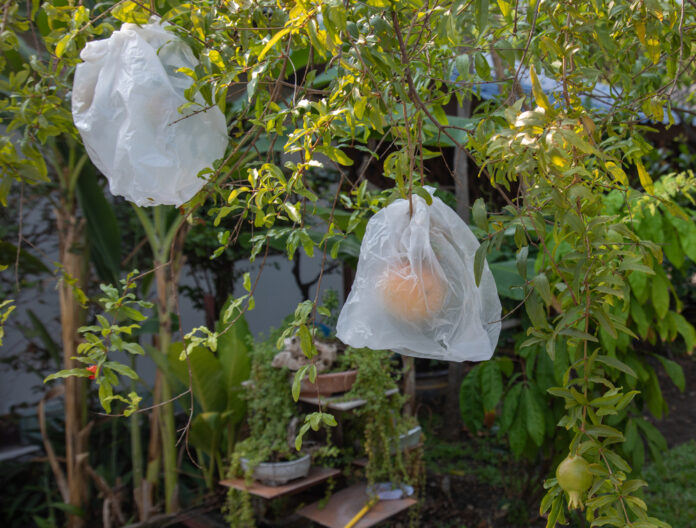Gardening is a rewarding endeavor that brings us closer to nature, provides fresh produce, and beautifies our surroundings. However, every gardener knows the frustration of dealing with pests and diseases that can disrupt the harmony of a well-tended garden. While chemical pesticides offer a quick fix, they often harm beneficial insects and disrupt the ecosystem. Fortunately, there are effective natural methods to keep your garden healthy and thriving without resorting to harsh chemicals. Here’s how you can prevent pests and diseases in your garden naturally.
Start with Healthy Soil
A garden’s foundation lies in its soil. Healthy soil fosters strong plants that are more resistant to pests and diseases. Begin by ensuring your planting site is free of debris from last season’s crops, as leftover plant material can harbor diseases and pests. Removing this debris helps prevent the reintroduction of pathogens into your garden. (Source)
Use Organic Compost
Incorporating organic compost enriches the soil with nutrients, improves its structure, and enhances its ability to retain moisture. Well-nourished plants can fend off pests naturally and are less susceptible to diseases. (Source)
Practice Crop Rotation
Rotating your crops each season prevents the build-up of soil-borne diseases and pests that target specific plant families. By avoiding planting the same crops in the same location year after year, you reduce the chance of recurring infestations. (Source)
Choose Healthy Plants and Seeds
Selecting robust, disease-resistant plants and high-quality seeds is crucial. Purchase from reputable dealers to ensure you’re starting with plants that are less likely to introduce diseases into your garden. (Source)
Implement Companion Planting
Companion planting involves growing certain plants together to naturally repel pests or attract beneficial insects. For example, planting marigolds can deter aphids, while herbs like basil and rosemary help keep mosquitoes and flies at bay. (Source)
Plant Herbs and Flowers That Repel Pests
Including plants like chrysanthemums, onions, garlic, and catnip in your garden can act as natural repellents against insects like beetles, moths, and mites. These plants release scents and substances that pests find unappealing, helping to protect your garden. (Source)
Encourage Beneficial Insects
Not all insects are harmful. Ladybugs, spiders, wasps, and dragonflies can naturally control pest populations by preying on common garden pests. To attract these helpful insects, plant nectar and pollen-producing flowers and provide habitats like insect hotels. (Source)
Use Physical Barriers
Creating physical barriers can effectively protect your plants from pests. Lightweight fabric or mesh row covers can prevent insects from reaching your plants while allowing sunlight and water to penetrate. Remember to remove these covers when plants require pollination. (Source)
Garden Mesh Fabric
Using garden mesh fabric is particularly effective for young plants vulnerable to pest attacks. It blocks pests while allowing necessary elements through, ensuring your plants grow strong and healthy. (Source)
Apply Natural Insecticides
Neem Oil
Neem oil, derived from the neem tree, acts as a natural insecticide affecting the feeding and reproduction of garden pests without harming beneficial insects. It’s effective against aphids, mealybugs, and other common garden pests. Applying neem oil can help keep pest populations under control. (Source)
Insecticidal Soaps and Homemade Sprays
Insecticidal soaps target soft-bodied pests through direct contact. Homemade bug sprays like garlic spray or insecticidal soap made with liquid soap and cayenne pepper can be effective against certain pests. Always test these sprays on a small part of the plant before widespread use. (Source)
Diatomaceous Earth
Diatomaceous earth acts as a physical barrier, desiccating insects upon contact. Sprinkling it around your plants can help deter pests, but it may be less effective in humid environments. Use it cautiously to avoid harming beneficial insects. (Source)
Maintain Garden Hygiene
Regularly remove weeds and debris from your garden, as they can harbor pests and diseases. Cleaning up dead leaves and plant matter reduces places for pests to breed and overwinter. (Source)
Prune and Clean Up Plants
Removing visibly damaged leaves and cleaning the plant base can prevent pest habitation and reduce stress on plants, allowing them to focus on self-defense. (Source)
Avoid Overcrowding Plants
Crowded plants create humid conditions favorable for diseases. Ensure adequate spacing between plants to promote air circulation, reducing the likelihood of fungal infections. (Source)
Water Wisely
Keeping leaves dry, especially at night, can prevent the spread of diseases that thrive in moist conditions. Water the soil directly rather than spraying water over the foliage. (Source)
Use Mulches
Applying mulch is a simple yet effective strategy. Mulch helps retain soil moisture, suppress weeds, and prevents disease-laden soil from splashing onto plants during rain or watering. (Source)
Monitor and Be Patient
Regular observation is key. Monitor your garden over a period of weeks to detect any early signs of pests or diseases. Early intervention can prevent small problems from becoming significant issues. (Source)
Encourage Natural Predators
Embrace the natural food chain by encouraging predators like birds, frogs, and beneficial insects that feed on garden pests. Providing habitats and a water source can attract these helpful creatures to your garden. (Source)
Conclusion
Preventing pests and diseases in your garden naturally is about creating a balanced ecosystem where plants can thrive without the need for harsh chemicals. By focusing on soil health, plant diversity, and natural pest control methods, you not only protect your garden but also contribute to a healthier environment. Remember, a garden is a living system, and working with nature rather than against it yields the most bountiful and sustainable results.


